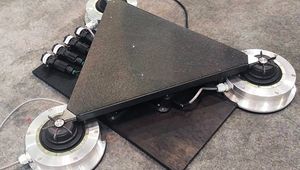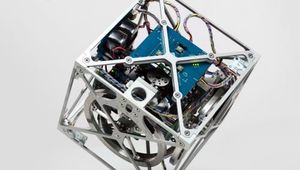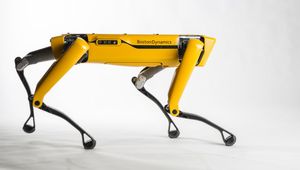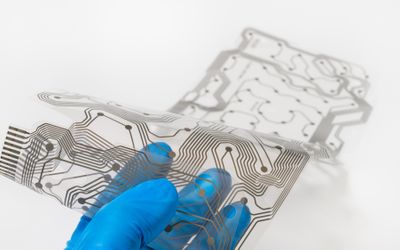Radxa X OKdo ROCK 4C+
A customizable single-board computer by Radxa and OKdo features 6 core processors, built-in on/off button, wireless connectivity, and multiple OS compatibility.
Technical Specifications
| SOC | Rockchip RK3399-T |
| Processor | Arm big.LITTLE technology (Dual Cortex-A72@1.5GHz, Quad Cortex-A53@1.0GHz) |
| GPU | Arm Mali – T860MP4 GPU, supporting OpenGL® ES 1.1 /2.0 /3.0 /3.1 /3.2, Vulkan® 1.0, Open CL® 1.1 1.2 and DirectX® 11.1 |
| Memory | Dual channel (64bit) 4GB LPDDR4 RAM |
| Power Requirements | USB C 5V/3A |
| HDMI | Dual micro HDMI ports supporting displays up to 4Kp60 resolution and 2Kp60 |
| USB | 2x USB2 HOST ports |
| 1x USB3 OTG/HOST port | |
| 1x USB3 HOST port | |
| Connectivity | 802.11 b/g/n/ac (WiFi 5) Wireless LAN |
| Bluetooth 5.0 with BLE | |
| Gigabit Ethernet | |
| MIPI | 1 x 4 lane DSI/1 x 2 lane CSI |
| Storage | Micro SD / eMMC |
| UARTS | 2 x UART |
| Others | External Antenna, On/Off Power Button |
| Software | Arm Neon™ Advanced SIMD |
| Armv8 cryptography extensions | |
| TrustZone® technology support | |
| Debian/Ubuntu Linux support | |
| Android 7.1/Android 5.0/Android 10/Android 11 support | |
| GPU enabled Al stack, (e.g. Caffe) | |
| Hardware access/control library for Linux/Android | |
| Temperature | Operation temperature: 0~50 ℃ |
| Storage temperature: -20~80 ℃ |
Overview
Fashioned in a single circuit board, single-board computers (SBC) are complete with features required for a functional computer, such as microprocessors, IO units, memory, and others. These SBCs performing similar tasks as other computing devices have found their rooms in industries given their efficiency, lack of downtime, and some various operations at a go.
However, one issue for low-budget users is affordability since these high-value computers consume more engineering costs. There are also concerns about flexibility, where other systems tend to be more flexible, especially in terms of customization. Using SBCs requires user knowledge since they have to learn the devices’ functions and development, considering their difference and complexity against common computing devices.
A SBC with a wide range of functionality is Radxa X OKdo ROCK 4C+, offering prominent features and expansion options. The board, based on Rockchip RK3399‑T SoC, is ideal for different multimedia and industrial applications. It has 6 cores, a dual channel 4GB RAM, and an Arm Mali GPU.
The eMMC and SD card slots allow additional storage while the dedicated mounting pads serve the 38MB SPI flash chip for booting the network. The on/off button protects the device from software corruption, and the cooling fans shields excessive heating.
The board is also customizable upon user request. ROCK 4C+ is a great alternative for Raspberry Pi as the model broadly features the same hardware specification as the Pi 4 Model B.
Design
Processor & Memory
The 6 ROCK 4C+ cores have two Cortex®-A72 and four Cortex®-A53, via the Arm big.LITTLE technology, the former runs at 1.5GHz and the latter at 1.0GHz. The board may offer better performance in some cases, as well as lower consumption of power over existing market alternatives. The model has Arm Mali – T860MP4 for GPU and a dual channel 4GB LPDDR4 RAM for the 64-bit memory.
SPI Flash
The 32MB SPI flash, dedicated to Network boot, has mounting pads. When mounted, the 40P GPIO header SPI function becomes occupied but the DSI remains at 4 lanes.
On / Off button
To compensate for the need for powering off correctly, the model has a built-in on/off button—allowing safe shutdowns to avoid the common software corruption issues that come when powering computers off.
Fan Connector
The 2-pin 1.25mm header of Radxa ROCK 4C+ enables users to connect a 5V fan or other peripherals. A PWM can control the fan without speed feedback.
Connectivity
ROCK 4C+ provides wireless connectivity using the external wireless antenna connector, which allows more options for enclosures. The wireless LAN features 802.11 b/g/n/ac or WiFi 5. It also provides wireless connectivity through Gigabit Ethernet and Bluetooth 5.0 with BLE. The USB 3.0 OTG support encompasses other connectivity options through the device’s 2 USB2 HOST ports, 1 USB3 OTG/HOST port, and 1 USB3 HOST port.
Operating System
ROCK 4C+ exhibits compatibility with multiple operating systems, like Android, Arm architecture v8‑A instructions set, and Debian/Ubuntu Linux.
Storage - uSD and eMMC
For additional storage, the uSD Storage Micro SD card slot can support up to 128GB. There is also the high-speed eMMC socket that can cater to usage for OS and data storage, available in 16G/32G/64G/128G. This eMMC socket is compatible with industrial pinout and form factor hardware.
HDMI and Audio Jack
Radxa ROCK 4C+ contains two micro HDMI ports that can display 4Kp60 resolution and 2Kp60 resolution. It works with a high-quality audio output with its 3.5mm headphone jack and microphone support. It has an HD codec supporting up to 24-bit or 96kHz audio. The analog audio output drives a 32-ohm headphone directly.
Camera and Display Interfaces
ROCK 4C+ features a 2‑lane MIPI CSI Camera aside from a 4‑lane MIPI DSI Display connector. The default connector pitch sits at 0.3mm. Thus the need for a 0.3mm to 0.1mm FPC cable in camera/display modules having 1mm pitch FPC.
Power Requirements
A 5V source can power the Radxa ROCK 4C+ through the 5V-3A USB C port.
SBC accessories Compatibility
With a 40-pin header, ROCK 4C+ can support a broad range of interface options. The board gains a wide range of connectivity capabilities, ensuring exceptional compatibility with many existing accessories. The dual functionality of various pins can even further ROCK 4C+ application in advanced accessories.
Customizability
The device offers customizability, especially in large volumes, in order to meet the design demand. The adaptive design of the board allows adding and removing components or even fully configuring it to answer the need for low-cost applications—all while ensuring efficiency and environmental improvements.








